5 Ancient Chinese Villages With Loads of History to Discover
China is renowned for its cutting-edge megacities, yet China is also one of the oldest civilizations on the planet. In its ancient villages Ronan O’Connell finds traditional life continues.
Shares
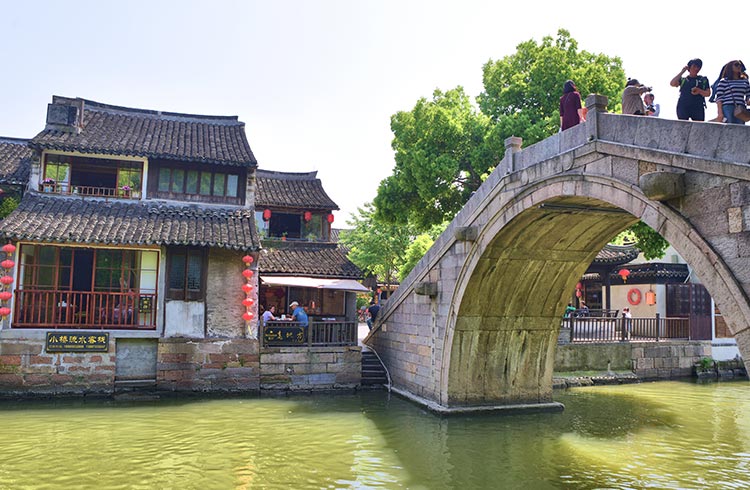 Photo © Ronan O'Connell
Photo © Ronan O'Connell
Chengyang
There are no cars in Chengyang, a village in a remote valley in the southern Chinese province of Guangxi, which borders Vietnam. That’s because the main entrance to this Dong-minority village is accessed via a narrow, wooden bridge that spans the Linxi River. The Chengyang Wind and Rain Bridge is a 260-foot-long (79m) structure, built in 1912 with only pedestrians in mind.
Walking across this bridge today, I pass several middle-aged women selling scarves and handicrafts. They are members of the Dong tribe, one of the 55 ethnic minority groups of China. Chengyang has been home to the Dong people for more than 1,000 years. Locals live in stilted wooden homes, feed their families by growing rice, sweet potatoes, and wheat, and still practice ancient Dong customs.
Traditional dances dedicated to the Goddess Sama are performed in the village square most days at 10am. After being lucky enough to catch one rousing performance, I am invited into a local’s home to enjoy a classic Dong meal – sticky rice with pickled vegetables, followed by a spicy hot pot.
To get to Chengyang, catch a 35-minute train from Guilin city (the tourist hub of Guangxi Province, 60mi (96km) from Chengyang) to Sanjiang South bullet train station. From Sanjiang, catch a taxi to Chengyang.
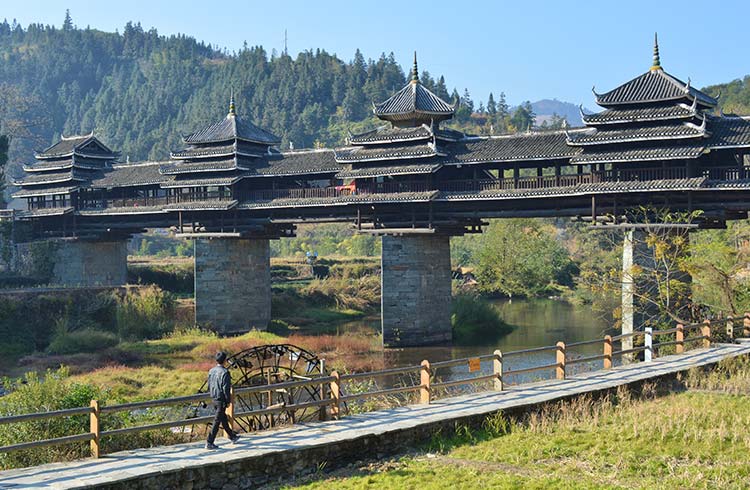
Yangmei
Needing respite from the noise of Nanning, the biggest city in Guangxi Province, I hop on a local bus to Yangmei, 25mi (40km) away. But despite a modest travel time of 90 minutes, on arrival it feels as if I have arrived in a different era. With its cobblestone alleys, historic temples, graceful pavilions, time-worn stone bridges, charming merchant houses, and peaceful riverside setting, Yangmei village is something of a time capsule.
More than 1,000 years old, Yangmei was a key commercial port during China’s Ming (1368-1644) and Qing (1644-1912) dynasties. Today, it’s a sleepy town of less than 5,000 people, many of whom are elderly. The 18th-century shophouses surrounding the village square sell spices, tea, herbal medicine, and comfort foods like delicious Laoyou rice noodle soup, a bargain at US $2 a bowl. It’s so good I find room for a second.
Yangmei bulges with unique history. What fascinates me most are its winding lanes. Along one, I find 200-year-old homes constructed from a quirky mix of powdered limestone and sticky rice soup. Another lane boasts the modest brick and wood building which was once home to two of the leaders in China’s pivotal 1911 Revolution, which ended the Qing Dynasty.
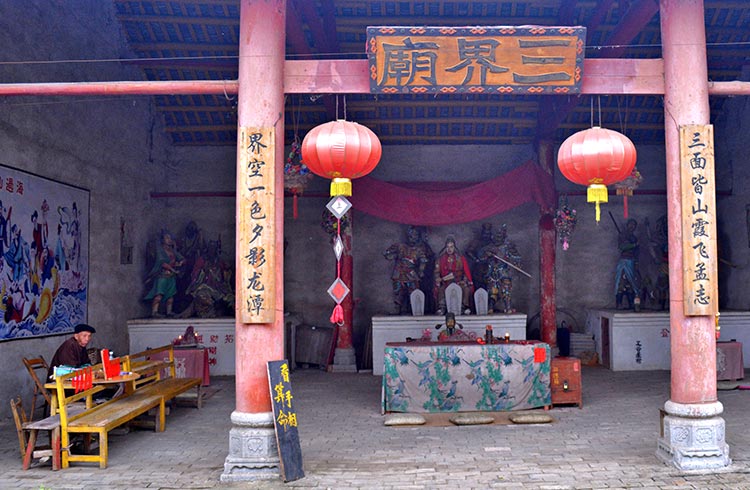
Xitang
They are large and beautiful numbers; 122 stone laneways, 104 ancient bridges, nine canals, and 2,500 years of history. This is Xitang, one of eight renowned water villages, 50mi (80km) southeast of downtown Shanghai. I had previously avoided Xitang assuming its proximity to Shanghai would mean it would be flooded with visitors. But then, I learn the difficulty of reaching it via public transport from Shanghai, and that the 50mi (80km), US $40 one-way taxi fare, is enough to discourage most visitors.
Xitang is picture perfect. Rowing boats glide along its canals, passing beneath majestic arched bridges flanked by stately stone buildings up to 1,000 years old with high-pitched roofs and decorative eaves. I can’t take enough photos.
It is very hot when I visit in April so I stroll under the town’s langpengs, the long, covered walkways which hug its canals. When the sun’s fury wanes, I fork out US $15 for a 30-minute rowboat ride along Xitang’s waterways. Then it’s time to savor a personal favorite – pork dumpling soup – enjoyed in an old restaurant looking out at one of the most charming places in China.
Anren
I couldn’t find any direct buses to Anren from Chengdu, the capital of Sichuan Province, and my taxi driver hasn’t a clue how to get there. Luckily, my phone’s GPS knows the way and, a US $30 fare later, we’ve traveled 40mi (64km) to Anren, an hour from downtown Chengdu.
More than 1,400 years old, Anren is renowned for its 27 mansions, constructed in the early 1900s, when Anren was controlled by Liu Wenhui, a local warlord. The mansions are a unique blend of intricate European-style stonework and the decorative arches and courtyards associated with traditional Chinese architecture.
While perusing a museum, set up inside one of his former homes, I read the story of how Liu Wenhui had dozens of local farmers killed so he could build the mansions on their land. It’s a grim tale, but the mansions are spectacular. So, too, are the three old streets alongside them.
About 100 ancient wooden buildings are scattered along Yumin, Shuren, and Hongxing streets. Locals live on the upper floors and, from their ground-floor shops, they sell clothes, handicrafts, and Sichuan souvenirs including brocade silk. Others run family restaurants serving some of the spiciest food in Asia – the Kung Pao chicken left my tongue numb for what felt like hours.
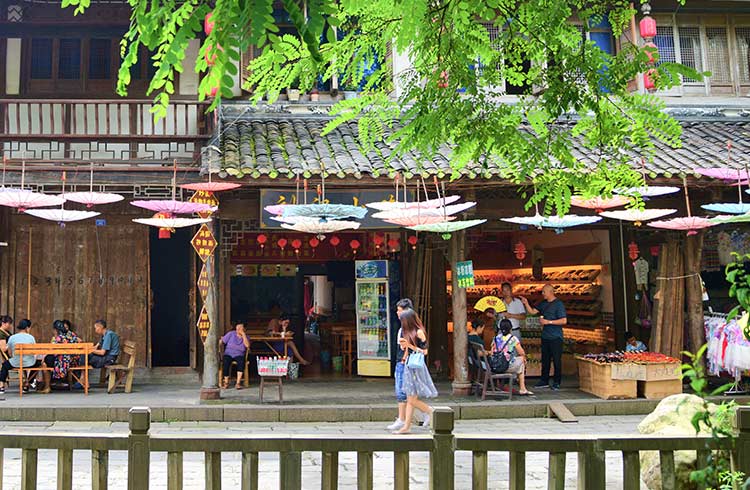
Ciqikou
Chongqing epitomizes the dizzying rise of modern China. One of the world’s fastest-growing cities, in the past 20 years it has exploded from a modestly-sized urban center to a monstrous metropolis of more than 20 million people. Yet, somehow, amid this frenzied growth, Ciqikou, a 1,700-year-old neighborhood, just 7mi (11km) from downtown Chongqing, has survived.
Ciqikou made its name as a porcelain-producing village in the 1400s. While it is undoubtedly visited more than the other villages on this list – most of its historic shophouses now cater to the tourism industry – it is still very interesting.
Ciqikou’s architecture is authentic, with many Qing Dynasty era structures remaining, notable for their multi-tiered roofs. Its layout is fascinatingly labyrinthine, with its alleys looping and winding, ascending and then descending. I got lost several times. In contrast to the flat, grid-structured town planning we’re now used to in Western cities, this chaos is delightful.
To get here, hail one of Chongqing’s ubiquitous yellow taxis, hand over US $5 and, in 15 to 20 minutes, you’ll be in the one part of the city that doesn’t look like the future.
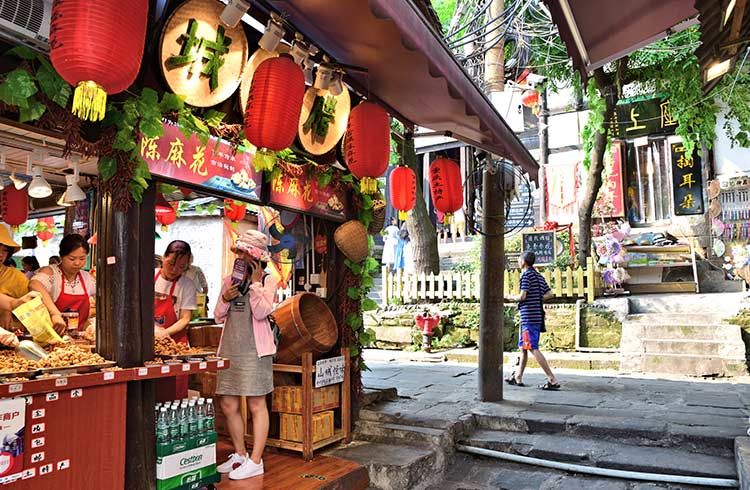
Related articles
Simple and flexible travel insurance
You can buy at home or while traveling, and claim online from anywhere in the world. With 150+ adventure activities covered and 24/7 emergency assistance.
Get a quote

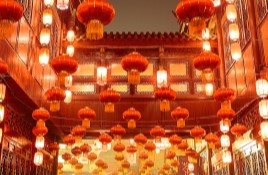
No Comments